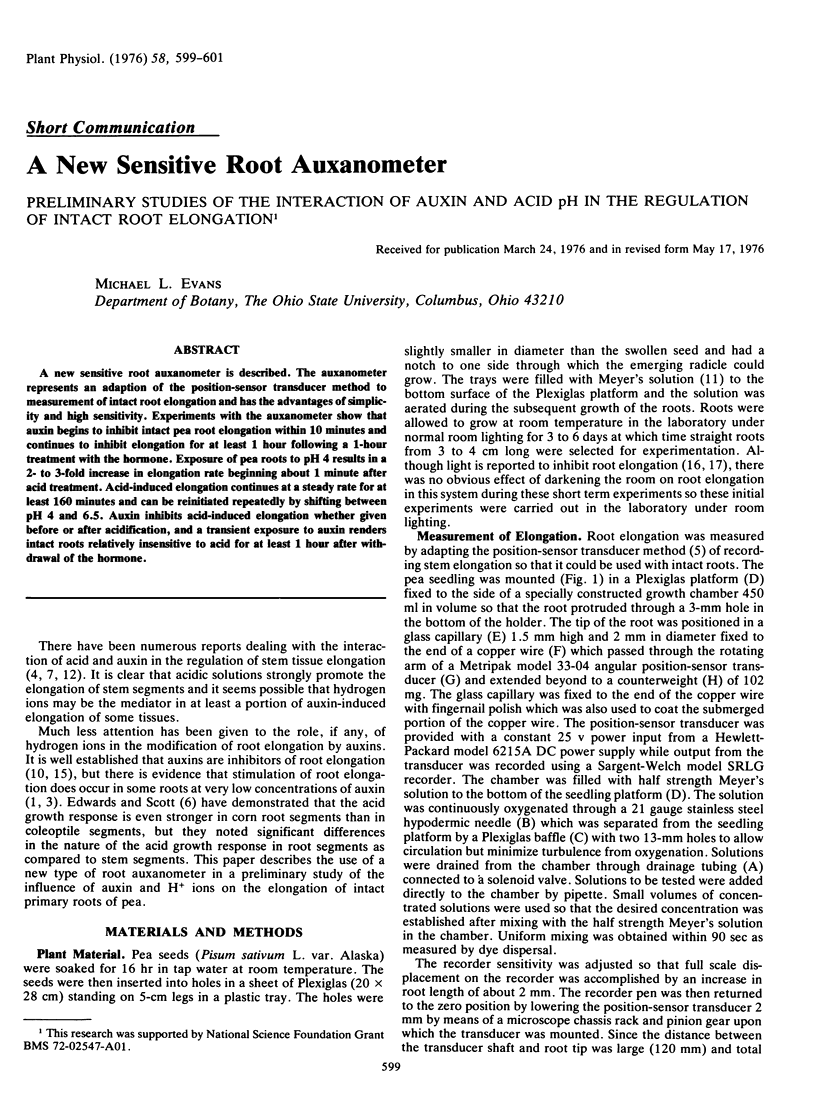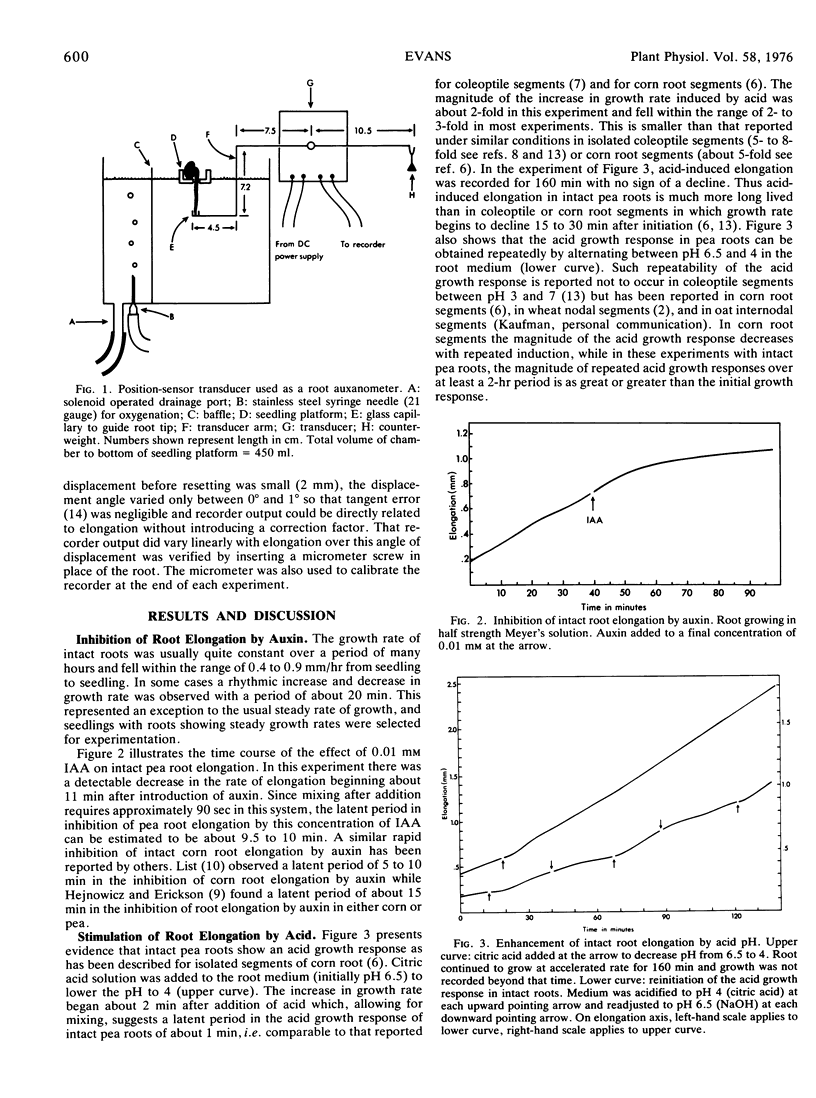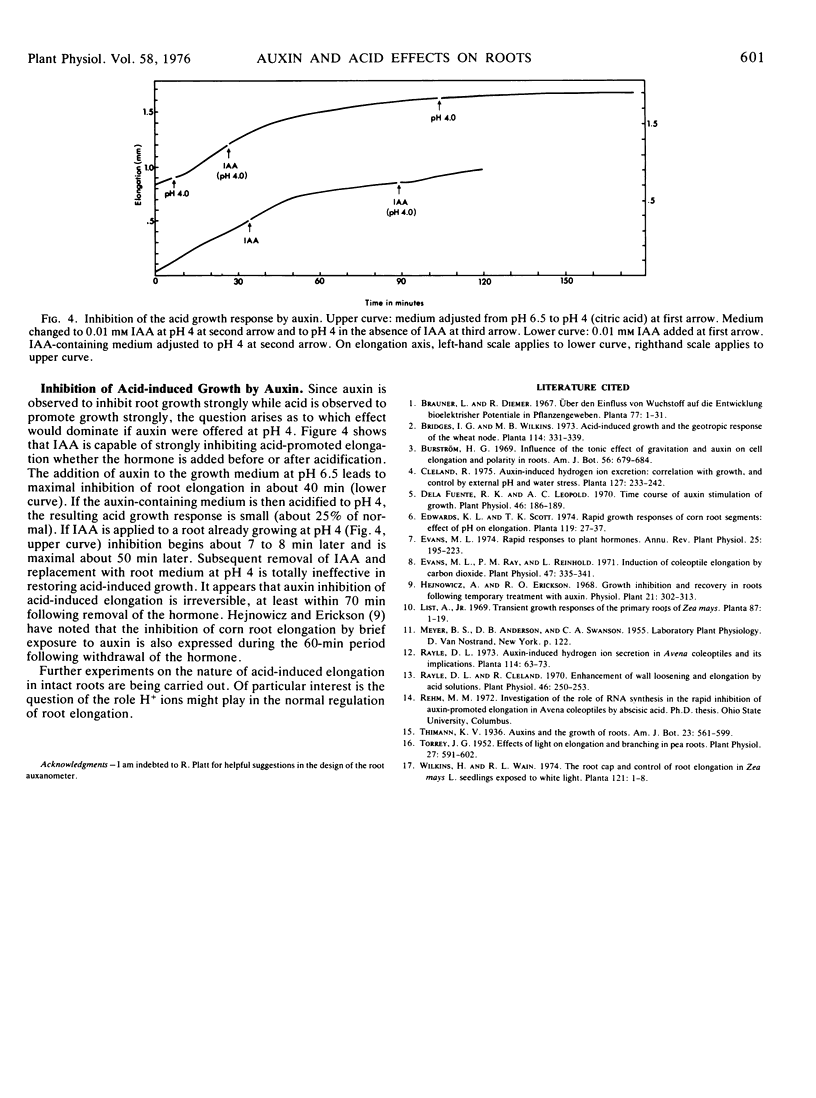Abstract
A new sensitive root auxanometer is described. The auxanometer represents an adaption of the position-sensor transducer method to measurement of intact root elongation and has the advantages of simplicity and high sensitivity. Experiments with the auxanometer show that auxin begins to inhibit intact pea root elongation within 10 minutes and continues to inhibit elongation for at least 1 hour following a 1-hour treatment with the hormone. Exposure of pea roots to pH 4 results in a 2- to 3-fold increase in elongation rate beginning about 1 minute after acid treatment. Acid-induced elongation continues at a steady rate for at least 160 minutes and can be reinitiated repeatedly by shifting between pH 4 and 6.5. Auxin inhibits acid-induced elongation whether given before or after acidification, and a transient exposure to auxin renders intact roots relatively insensitive to acid for at least 1 hour after withdrawal of the hormone.
Full text
PDF


Selected References
These references are in PubMed. This may not be the complete list of references from this article.
- Dela Fuente R. K., Leopold A. C. Time course of auxin stimulations of growth. Plant Physiol. 1970 Aug;46(2):186–189. doi: 10.1104/pp.46.2.186. [DOI] [PMC free article] [PubMed] [Google Scholar]
- Evans M. L., Ray P. M., Reinhold L. Induction of coleoptile elongation by carbon dioxide. Plant Physiol. 1971 Mar;47(3):335–341. doi: 10.1104/pp.47.3.335. [DOI] [PMC free article] [PubMed] [Google Scholar]
- Rayle D. L., Cleland R. Enhancement of wall loosening and elongation by Acid solutions. Plant Physiol. 1970 Aug;46(2):250–253. doi: 10.1104/pp.46.2.250. [DOI] [PMC free article] [PubMed] [Google Scholar]
- Torrey J. G. EFFECTS OF LIGHT ON ELONGATION AND BRANCHING IN PEA ROOTS. Plant Physiol. 1952 Jul;27(3):591–602. doi: 10.1104/pp.27.3.591. [DOI] [PMC free article] [PubMed] [Google Scholar]


